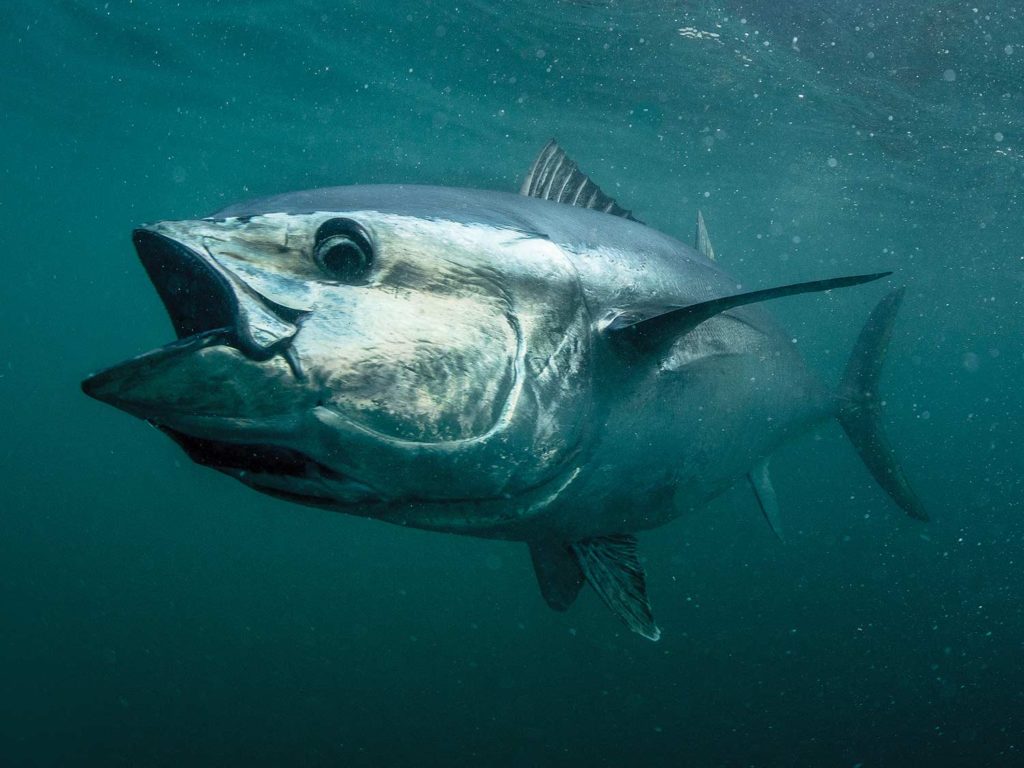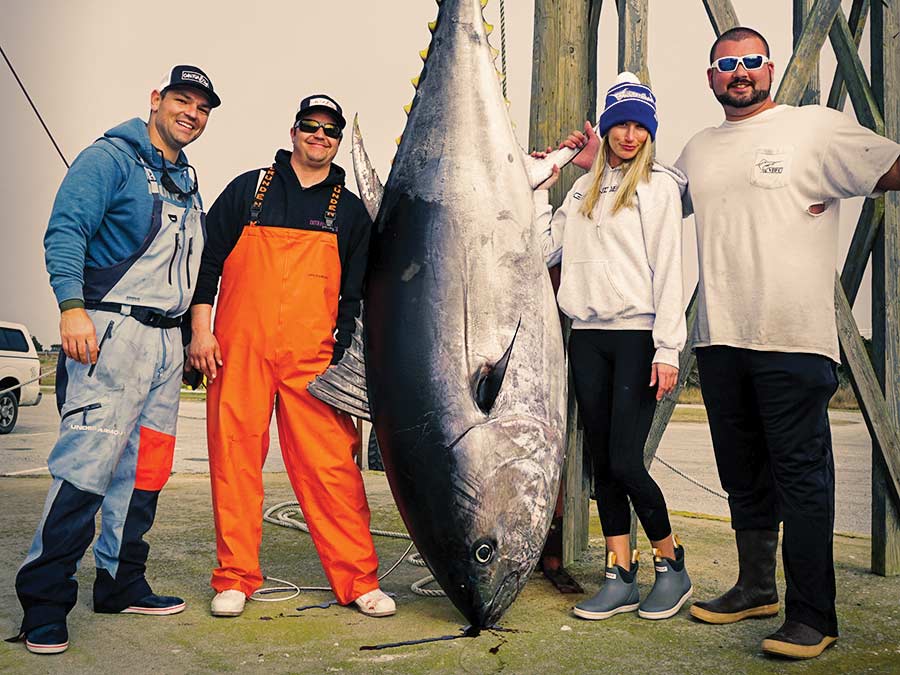
For anyone who targets bluefin in state and federal waters on the East Coast of the United States, a tremendous number of them—from schoolies (27 to less than 47 inches curved-fork length) to commercial-size bluefin (greater than 73 inches curved-fork length)—are observed there. Yet, the proposal of total-allowable-catch reductions, reduced seasons and bag limits set by governing authorities are not consistent with real-world observations.
To provide some clarity behind those observations and the perceived data gaps to address what is behind those who are recommending a bluefin tuna TAC reduction, we must note that bluefin are managed as two separate stocks (western Atlantic and eastern Atlantic and Mediterranean) by the International Commission for the Conservation of Atlantic Tunas. ICCAT manages bluefins and other select pelagics that migrate across international boundaries, and the US and other ICCAT contracting parties are required to comply with ICCAT fishery-management measures. Measures adopted by ICCAT are then implemented by the National Marine Fisheries Service’s Highly Migratory Species Management Division.
Watch: Learn to rig a swimming mackerel here.
Stock Status
The current western Atlantic bluefin tuna TAC—which we share with Canada, Japan, Mexico, the United Kingdom (Bermuda) and France (St. Pierre and Miquelon)—is currently 2,350 metric tons. The US portion of this level is 1,272.86 MT, and the US share of the total TAC is further separated and managed by NMFS into subquotas for recreational and commercial-size fish that can be legally landed utilizing various means and methods (hook-and-line, longline, trap, harpoon, etc.) The eastern Atlantic/Mediterranean TAC is 36,000 MT and is shared among many ICCAT contracting parties. ICCAT recognizes that the western and eastern Atlantic/Mediterranean stocks mix; they are not truly separate as demonstrated by evidence from research showing tagged bluefin migrating great distances on each side of the Atlantic.
The 2020 stock assessment concludes that there is no lack of large, spawning-size bluefins, but there does appear to be a lack of recreational-size schoolies in the data. This has fishermen scratching their heads because of the tremendous biomass of bluefin observed in our waters.
One of the indicators of stock status is based on how many fish are caught and released annually, and, in this instance, there are fewer recreational-size bluefin tuna being reported as “caught” in US waters. So how can this be since this is inconsistent with the observations of recreational anglers, for-hire fleet and commercial fishermen? We suspect that the biomass of schoolie bluefin is not being captured—or reflected—in the annual landings by recreational fishermen.
Data Collection
While the Large Pelagic Survey has done a credible job of reflecting the recreational fishermen’s catches and releases for a wide array of pelagics, including bluefins, over the years, how have the annual results gone down and yet the stock is in trouble? Recreational anglers in the waters from Delaware to North Carolina have reported that the schoolies still arrive at approximately the same time each year but, as water temperatures increase, their residency in this area is short-lived, and they migrate farther north and east into cooler waters. This phenomenon has been observed farther north in recent years, from New Jersey to Maine, with huge numbers of schoolies encountered nearshore.

Historical vs. Present Day
In New England, one could rely on encountering bluefin schoolies every year. North of Cape Cod, one would typically encounter them every five to 10, 15, or 20 years as part of an ongoing cycle that is dictated by water temperature and sustenance. With increased water temperatures and climatic stock shifts, this appears to be more of an annual event and not a long-term cycle. Bluefins of all sizes are landed north of Cape Cod to Maine, and in some instances, right off the beach or within miles of shore, resulting in targetable fish by the recreational community as opposed to just those fishing 50-plus miles offshore.
Historically, the commercial hook-and-line, longline and harpoon fleets were landing bluefin offshore, with no lack of small fish in these waters. The commercial tuna fleet can only legally land fish with a curved-fork length of 73 inches or greater, with smaller fish accessible to recreational anglers. As a result, this biomass of fish found offshore is observed by commercial fishermen but is not captured in the data collected by LPS because the fish are not landed by recreational anglers.
As noted, with the climatic shift, more schoolies are moving north and are being landed right off the beach or nearshore by recreational anglers. Because of this movement, one would assume that the landing numbers would escalate. But according to the NMFS, the total number of landed school-size BFT is down, even though historical trends have increased from New Jersey to Maine.
Read Next: If you want to experience outstanding bluefin tuna action, Nova Scotia is the place.
There are two reasons for this: 1) Many of these fish are not being detected in the data collected through LPS as a result of the biomass observed by the commercial fleet located 50-plus miles offshore that is not accessible to the US recreational fleet; and 2) we are experiencing what we call the Wicked Tuna effect. This effect has changed the fishery so that the fishing public prefers to target commercial-size bluefin and are no longer interested in smaller fish, resulting in many recreational anglers permitting their vessels in the HMS General Category to commercially land the larger specimens. By doing so, fewer of the small fish are being tracked through the LPS data collection. There is no doubt that these GC fishermen observe schoolies, but now their vessels are not equipped, nor permitted, to land them because they’ve changed their HMS permit category.
Clearly, the juvenile catch-per-unit effort that is the basis for the indexes of schoolie bluefin abundance is not capturing the huge biomass of these fish observed by fishermen. If the NMFS would increase the LPS efforts from New Jersey to Maine, they would then detect the fish that have moved farther north and east. Additionally, data collection on fish that are seen but not landed by the commercial fleet could also be addressed using scientifically based aerial surveys, as conducted in the past. Clearly, there is an ongoing cycle resulting in the migration of small bluefins that appears to be an annual event, rather than one occurring every five to 15 years. Bluefins are just one example of a species that is being observed as a result of the same phenomenon. Ultimately, addressing the climatic shift that affects fish-stock distribution is important and should be considered when managing our fishery resources for the future.
This article was originally published in the August/September issue of Marlin.







